Instead of screaming into the void of Twitter, I bring you a weekly highlight reel of what it’s like going places in Greater Hartford when one is gloriously car-free. These posts are on a slight time delay because nobody needs to know exactly where I am when I am there.
PAIN AT THE PUMP, I
We (humans, our ancestors’ descendants, our distant cousins)
are at war (still and again)
and you (the you who writes the headlines, the you whose material existence is excessive and compensatory for all the times a stumbling block was placed before that which you believed to be entitled, the you who [in more plain language] buys giant automobiles while antisocially living in racially and economically segregated suburban and exurban hellscapes [which is a choice])
complain about the price of gasoline
as bodies hit the ground
and our planet burns itself out.
PAIN AT THE PUMP, II
Walking home from work I run into a friend, who changes his path and comes along to chat for a mile. He spots $3 on the ground. Takes a dollar and hands me the other two. He finds a penny ten minutes later. There is the bus station, so he splits off to go his way and I continue another half mile home, finding a dollar bill.
It pays to walk.
PAIN AT THE PUMP, III
Thump thump thump thump.
One day every week, someone on my street idles their car for 20-30 minutes. I know this because their loud car stereo, same album every week, is playing and it begins at 6 AM, or earlier, on a Monday.
This is a working class neighborhood, that euphemism for a mix of people — those with decent paying jobs, those who comprise the working poor, and those who do not hold formal jobs — retired, illegal street mechanics, those with no work at all.
Outsiders continue to call it a ‘rough’ neighborhood, which it only feels like when someone drags your ass out of slumber with the same thump thump thump thump coming from their needlessly idling car.
The rhetoric is that rising gas prices will hurt “low income consumers,” but it seems this demographic remains willing to burn gas while going nowhere.
PAIN AT THE PUMP, IV
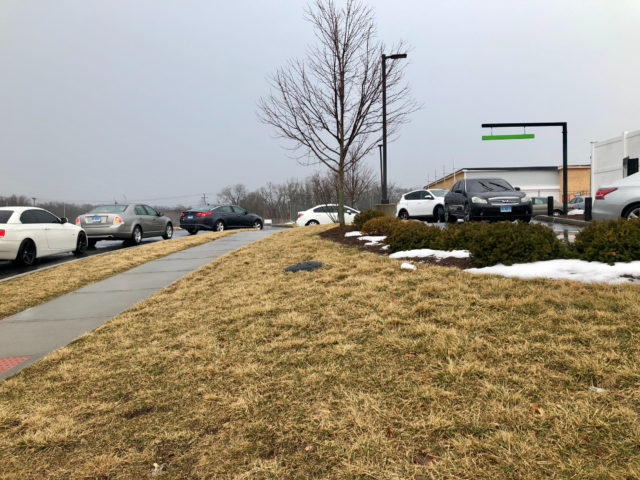
If the coffee drive-thru looks like this,
gas is far too cheap.
This is the Fenn Road Starbucks in Newington, and yes, I did nearly get clipped while taking this pic — a pic that does not capture about six other cars because to get that shot, I would’ve had to stand in the middle of the road.
The marked crosswalk is faded, not that paint protects; people beached their vehicles at this ghost of a crosswalk, as well as the one that takes someone from the sidewalk to the cafe. This was a choice made by the Town of Newington when it decided to approve a drive-thru at a site that should have been prioritized for transit-oriented development, given the proximity of the bus station, but none of this is surprising, as they neglect to have a sidewalk on that side of the road, nor do they have an easy way for people to get into the grocery store plaza (across street) from the bus station. They fenced off the cut-through and there is no sidewalk along Fenn Road on the side with the grocery store.
[And for a real rush, try walking from this Starbucks to Central Connecticut State University. On a map, it looks like it should be easy. You should not need to take a bus from Cedar Street Station to campus because of how geographically close it is. But Newington has a real crush on the automobile judging by how terrible this area is designed. People designed it. People made this. People can unmake it.]
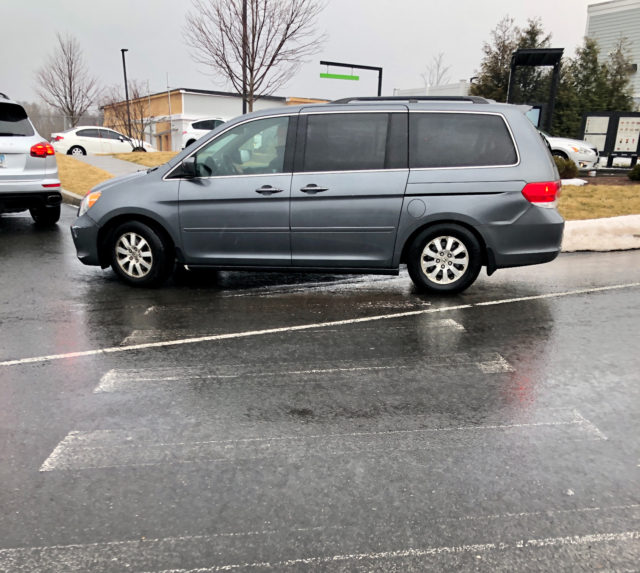
Anyone in this idling coffee line, I do not want to hear it.
Gas prices should be at least double. Besides that there is a parking lot — this is a not a drive-thru only location — it is a mere two minute walk from the cafe to the Cedar Street CTfastrak station.
But if you want to overpay for everything, knock yourself out. Just stop expecting others to subsidize your extravagant lifestyle through artificially inexpensive gas prices. $4 per gallon is inexpensive. $8 per gallon is inexpensive.
THE A WORD
I wake up to learn that sx people died preventable deaths on highways in Connecticut. This does not include the 91-year old pedestrian who was killed when struck by a plow truck driver yesterday morning in the southeastern part of the state. That’s at least seven people killed in Connecticut by motor vehicles within a 24-hour window, and that’s only what I recall. I’m writing this at the 25 hour mark. It’s not that my memory is terrible. Crashes are so frequent, and the news rapidly buries victims, keeping no tally like they do for shootings.
You can say just about any word to me that you’d like, but I will stop you when you cross the line, and that’s when you call a crash an accident.
WFSB did this while reporting on the night of deadly head-on crashes, and when called out for it on Twitter, my first post mysteriously vanished — probably because I facetiously suggested they were in league with defense attorneys.
This is a screenshot of most of their coverage; the highlighting of their exonerative language is mine:
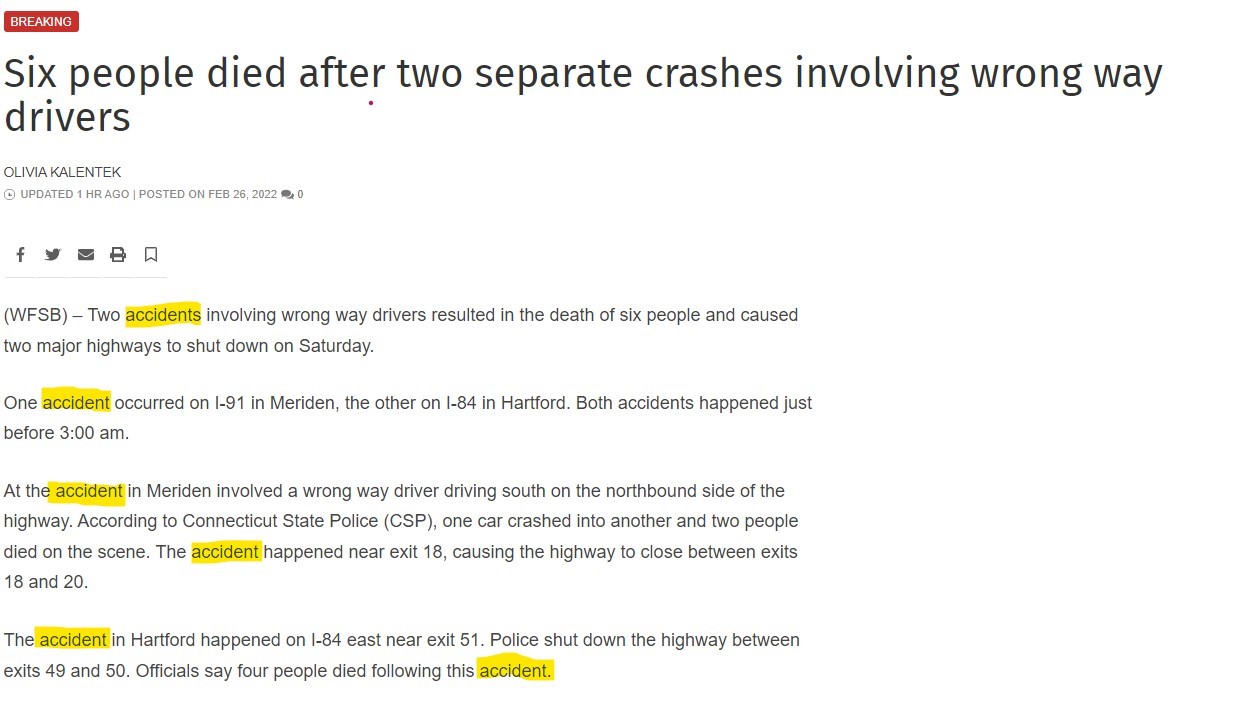
And accident is exonerative language. It’s doing the work of defense lawyers for them. It conceals insidious patterns. It absolves of responsibility the traffic engineers, the politicians who inadequately budget for safer road design, the automotive industry, and whomever was behind the wheel.
[This does not even touch on all the other passive and exonerative language, like “one car crashed into another” as if these were autonomous vehicles]
Tell me that these were “accidents” and I’ll tell you that you were born yesterday.
Let’s start by assuming that neither driver who had entered the highway in the wrong direction had intended to do that. This does not make what happened after an accident. It makes the six fatalities unintentional. This was not some “it was God’s plan” or “there was nothing we could do to avoid this” bullshit, so miss me on that.
If we look at what the wrong-way drivers were doing — and this is being written before any other information has been made available — we can assume that either sleep deprivation and/or intoxication/impairment played a role. We can look into if sheer recklessness was involved, and ask what was at the heart of it. Can we be brave enough to talk about that in a productive way?
The next thing to look at is what the entrance ramp design is like. Right now, nothing has been said about where these drivers entered the highway (let’s assume neither pulled a U-Turn on the highway to then go the wrong way). Highway ramps are typically excessively wide. When you have the entrance and exit side-by-side (such as the one on Capitol Avenue or Sisson Avenue) it’s not hard to imagine how someone who is impaired in one way or another could go the wrong way.
Not getting it? Parents out there: do you freak out at your kid when the toddler dives headfirst down the stairs, or do you put up a safety gate knowing that toddlers gonna do what toddlers gonna do?
So you get it? If we know people are going to make terrible choices and then get behind the wheel and make more terrible choices, why aren’t we putting up more toddler gates?
Why is it standard to install gates for parking lots but we don’t use this basic technology for the highway entrance/exit?
You know why.
Of course it would slow down traffic.
That’s the whole point.
It could prevent people from entering where they shouldn’t, which means lives saved because head-on crashes are fatal. Anyone who understands physics knows this. It would serve the function of slowing vehicles as they get onto the highway. It makes no sense to give a line of cars the green light, so that suddenly you have five drivers trying to merge with existing traffic at once. Who thought that up? Go back in time and fire them.
On the other end, having drivers slowed down exiting highway ramps is another reminder that they are leaving the interstate and need to drive like it. This would stall people from doing quick right turns off ramps, endangering pedestrians And yes, this would be a “headache” for those who believe they are entitled to slip in and out of places as quickly as possible, and to hell with anyone or anything that stands in their way.
Good.
Let’s make it less convenient.
Maybe this and a sharp increase to the gas tax would get some to reconsider their mode of transportation, along with their personal choice to live in the middle of nowhere.
Instead, all we get are apparently some lights that flash in key areas across the state when someone drives the wrong way.
Do we have evidence that this does anything?
Because the flashing pedestrian crossing beacons on Capitol Avenue and Prospect Street do not capture the attention of drivers at times of day when sleep deprivation and inebriation are less of a factor.
We can ask questions about vehicle design. Who drove what into which other thing, at what speed? Why was this possible?
I marvel at the amount of technology we have — and have had for some time, like speed governors — that we neglect to deploy. When a few people got their panties in a twist over the kids-these-days running amok with e-scooters, there was geo-fencing to keep them off highways and a reduction of speed for new riders.
Yet ignition interlock devices — tools that prevent drunk driving — are only after-market when they should be a standard feature in automobiles where the potential to cause harm to oneself and others is much greater than what can happen on an e-scooter.
What’s noticeable about these two deadly crashes from the early morning of February 26, 2022 is that one involved four deaths, and the other happened within minutes of that. A head-on collision resulting in two deaths would hardly get attention from anyone outside of those who knew the victims.
Jessie Singer, in her new book There Are No Accidents: The Deadly Rise of Injury and Disaster — Who Profits and Who Pays the Price, writes: “One of the many reasons accidents fail to register as a cost to society is that they rarely involve a fully loaded 747. Most of the time, when we die by accident, we die in ones and twos. These deaths do not make the nightly news. Rather, accidents are quick and lonely deaths, not reported beyond the police blotter, if at all.”
In the days following these recent fatal crashes, perhaps because of the unusually high death toll, some advice was published for preventing wrong way/head-on highway collisions.
To quote my dead grandmother, “they meant well.”
The tips — I won’t waste anyone’s time by linking to them — mentioned the blinking lights and included advice for other road users. Basically, nothing about preventing a person from driving the wrong way, and a few “I guess this is better than nothing” tips for the other drivers. It caught my attention because it was rare to see drivers given the eyeroll-worthy advice typically reserved for pedestrians. You know, the kind of “hey potential victim, here’s how to play it safe!” tips that possibly do nothing. There was nothing in this piece advising engineers to eliminate this danger by fixing entrance ramps. Nothing suggesting ignition locks as the standard.
As Singer puts it, “To slip is a human error. Water left on the floor is a dangerous condition. To exceed the speed limit is a human error. A road designed to encourage you to exceed the speed limit is a dangerous condition.” . . . “you can create conditions that anticipate errors and make those mistakes less of a life-or-death equation. Or you can focus all your energy on errors, and let the same accidents happen again and again.”
When will we create conditions that anticipate errors? I’d like an exact date. We can have a party to celebrate on that day. I’ll bring the salsa.
WHY DON’T PEDESTRIANS JUST USE THE SIDEWALKS AND CROSSWALKS AND ALL THESE PLACES WHERE WE HAVE TRIED TO CORRAL THEM?!?!?!?!
Exhibit A: This Fuckwit
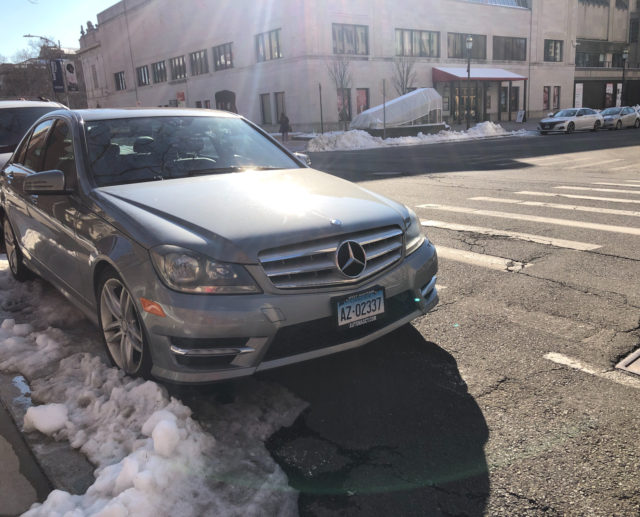
Show me what entitlement looks like
This is what entitlement looks like
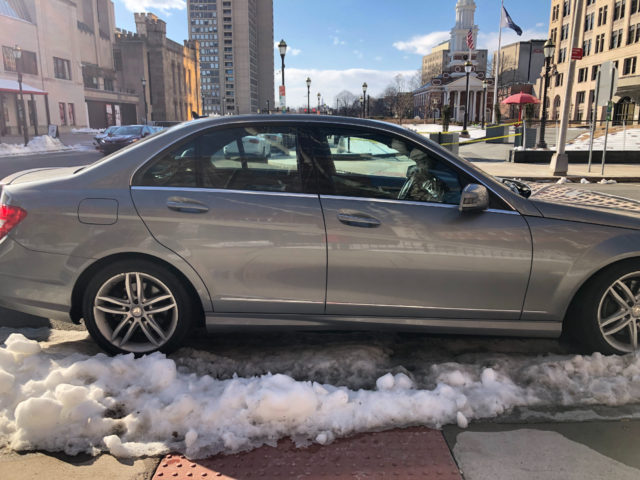
They could have parked a few feet down the street or on a nearby street. Instead, they chose to block the crosswalk at an intersection where visibility is already poor for pedestrians because of the ridiculous allowance of on-street parking within the intersection, which you can see by the minivan-SUV thing parked behind the offending car.
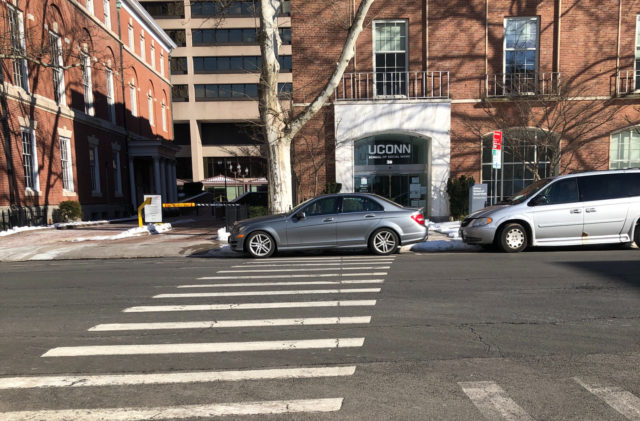
It seems like no big deal until you think about how if you do get hit crossing here, on top of everything else, you may be ticketed by police for not being in the crosswalk, if that cop feels like being an ass.
Exhibit B: This Other Fuckwit

This person regularly parks the entire truck across this crosswalk. Today it was only the hitch, which I can’t even with because when has this guy ever towed a thing?
Notice that snow mound? That was there 48 hours after snow ended. That belongs to. . .
Exhibit C: This Deadbeat Landlord
131-133 PUTNAM STREET LLC, according to City of Hartford records.
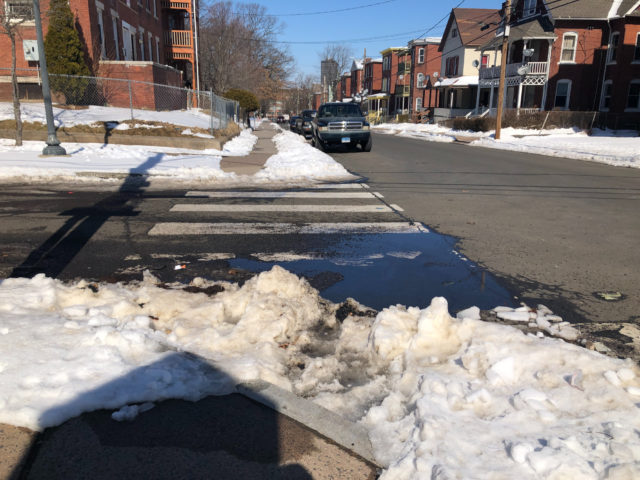
Exhibit D: And Another Deadbeat Landlord
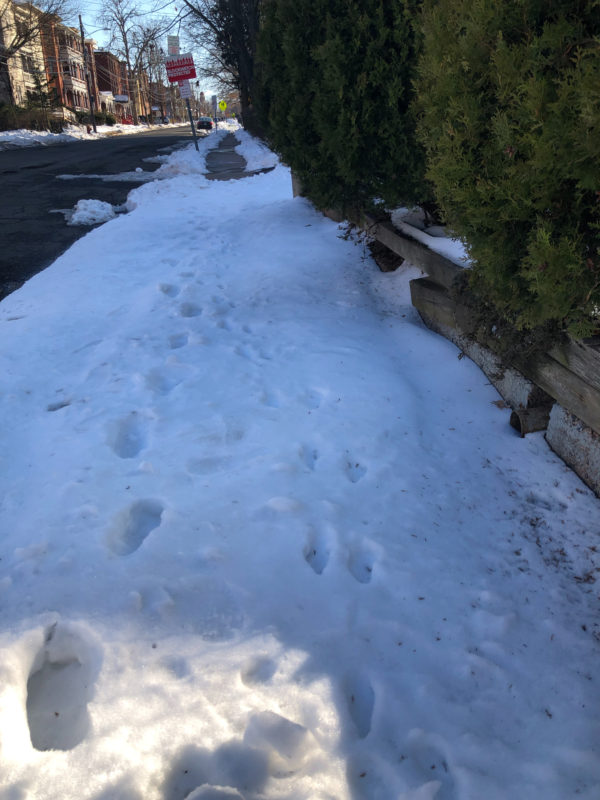
The owner of 255 Putnam has not bothered to clear the sidewalk for any snow/ice event in the 2021-2022 winter season.
Exhibit E: This Fuelish Neglectful Property Owner
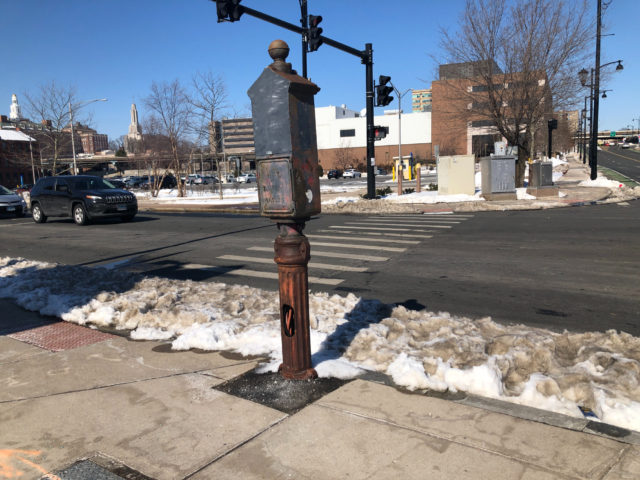
The Noble/Shell gas station (335 CAPITOL AVENUE LLC) at Broad and Capitol has not bothered clearing the curb ramps for pedestrians. Predictably, they ensured that people can drive in and out.
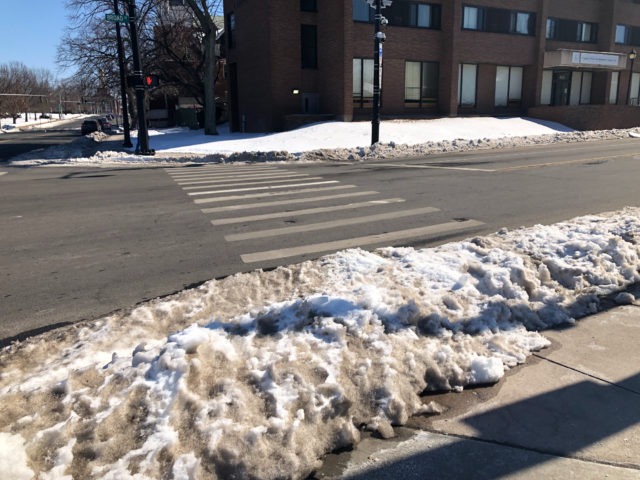
Exhibit F: This Other Deadbeat Landlord (City of Hartford)
I guess we just half-ass everything now? Cool.
This is the edge of a park directly across street from elementary school.
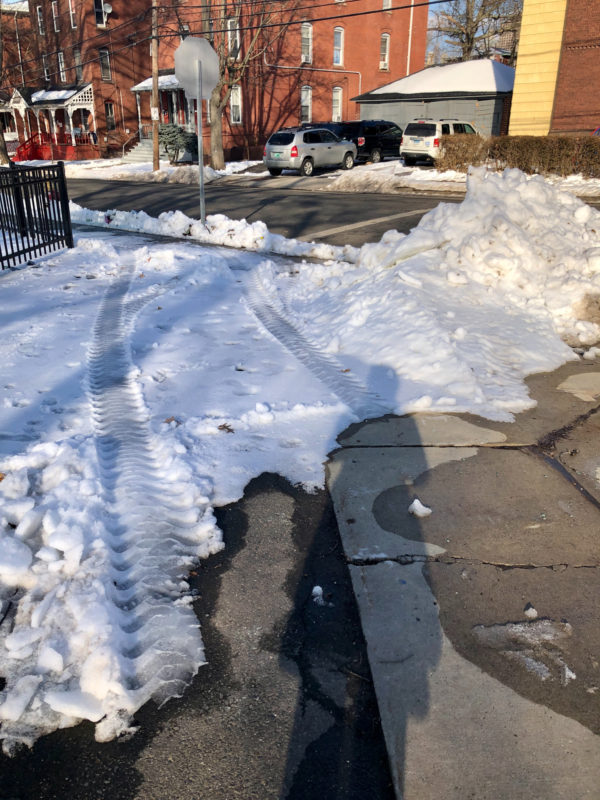
Exhibit Geez: The Archdiocese
They continue to neglect their segment of sidewalk on Asylum Avenue, and before anyone rushes in to give them the benefit of the doubt, their main parking lot was plowed and they do this in every storm. These photos were taken 96 hours after the storm ended.
From these two photos, you can see absolutely no effort taken to shovel the sidewalk, which happens to serve the bus stop.
Nobody can walk through this, let alone use a wheelchair or stroller. I clung to a fence while climbing over the mound because falling seemed like better odds for me than walking in Asylum Avenue where vehicles are driven at highway speeds.
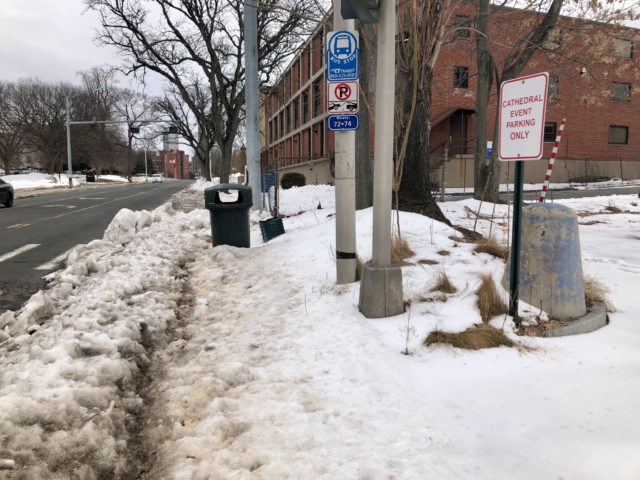
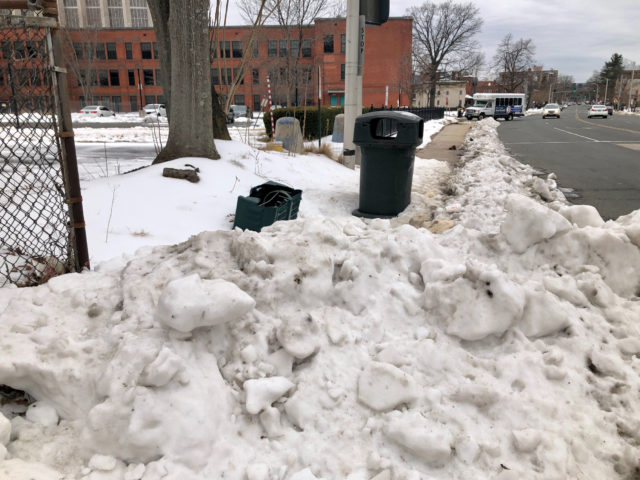
WHY DON’T CYCLISTS USE THE PRECIOUS SCRAP OF AN UNPROTECTED BIKE LANE WE BESTOWED UPON THEM?!?!

I can’t think of any reasons.
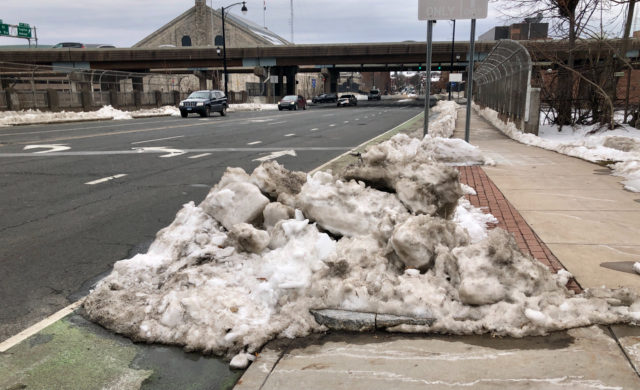
WHAT NEXT
- Want to run errands without worrying about which dictator you’re funding this week? Contact your legislators and ask them to support SB-4. There’s even a template you can follow; no need to create it all from scratch.
- Find a copy of Jessie Singer’s book There Are No Accidents: The Deadly Rise of Injury and Disaster — Who Profits and Who Pays the Price. The Hartford Public Library has a copy. Consider requesting your town library get a copy of this book, as it also covers workplace “accidents” in a way we should be thinking about while in the pandemic.
- Not sold on it? Listen to an interview with the author on The War On Cars
- Attend Bike Walk Connecticut’s Zoom discussion on the 2022 legislative session. This will be on Monday, March 14, 2022 at 7:30 PM. It’s scheduled for 90 minutes.
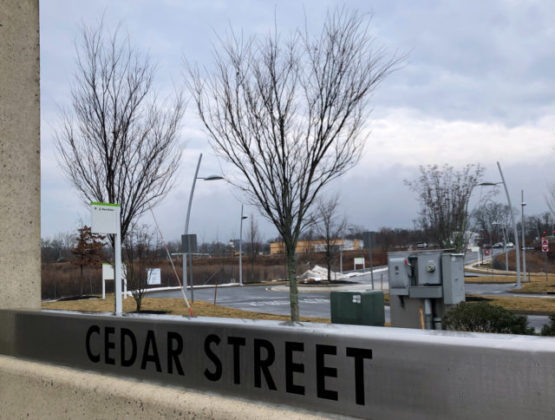
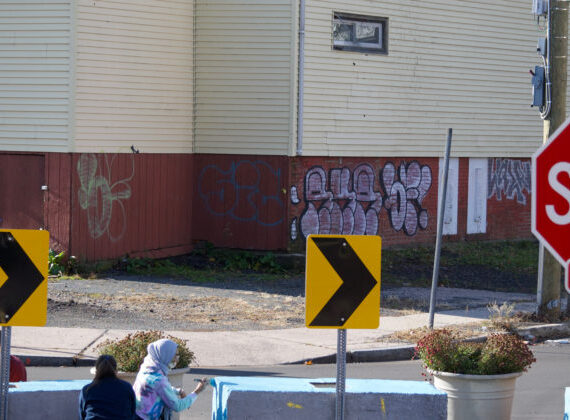
Linda Pagani
So glad you called out the Noble gas station at the corner of Capitol and Broad. This is their modus operandi. They didn’t clear the curb ramps last winter, either. Then, as I was precariously perched on uneven, ice-capped snow banks waiting to cross, I wondered if I was going to slip and fall into the path of a car and die. Why do they think these ramps are not part of their property?
Kerri Provost
I don’t think they care.
And even though I don’t have a tank to gas up there, I make sure that I never stop there now for snacks or anything because if they can’t care about my safety, I can’t care about supporting them.
Linda Pagani
I agree. I would never support them in any way.